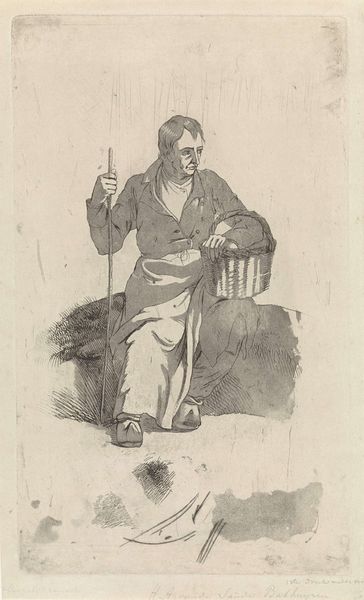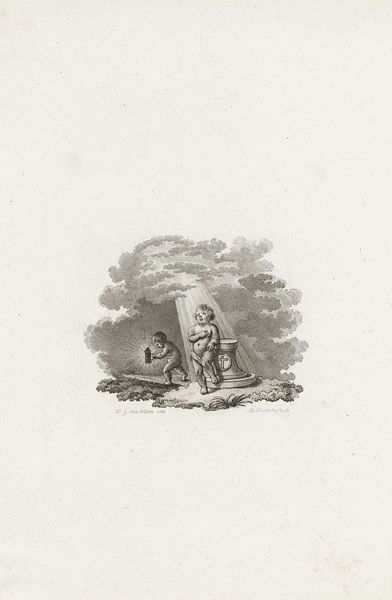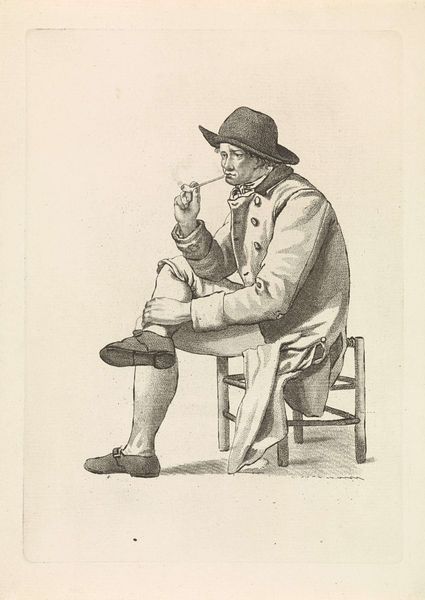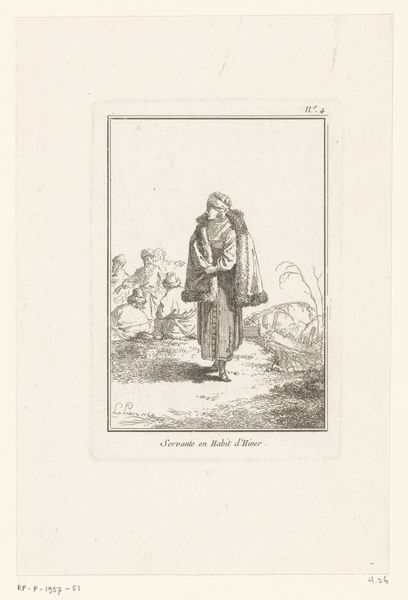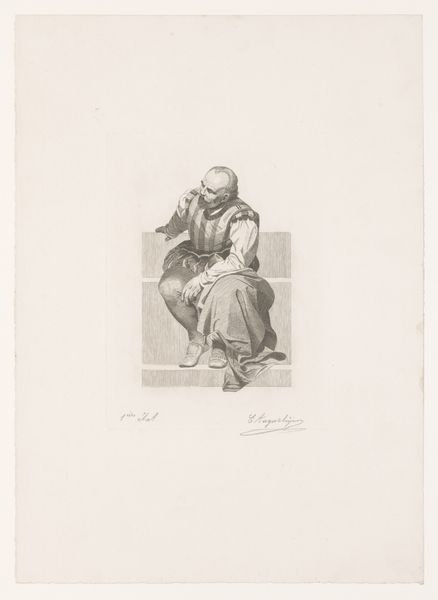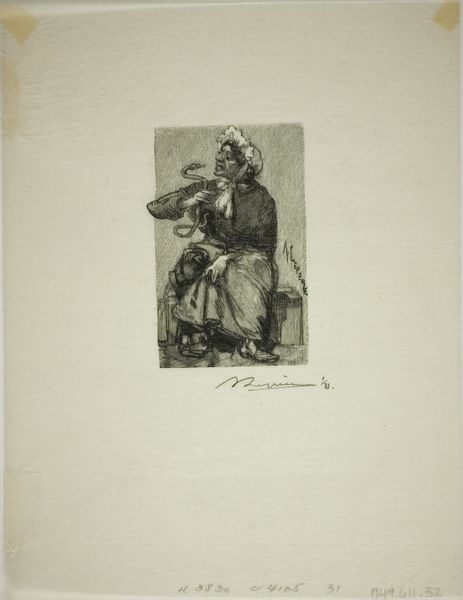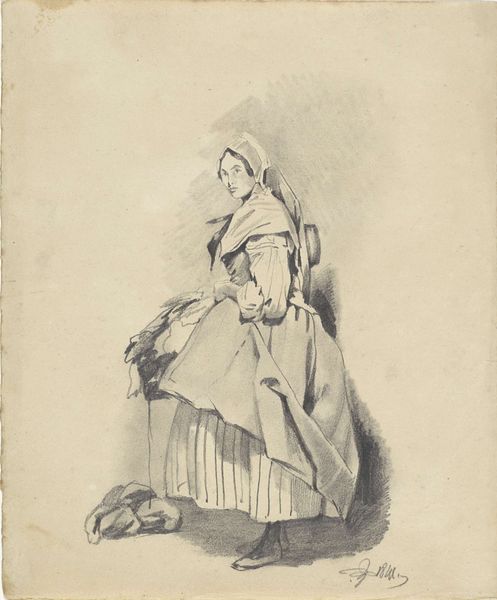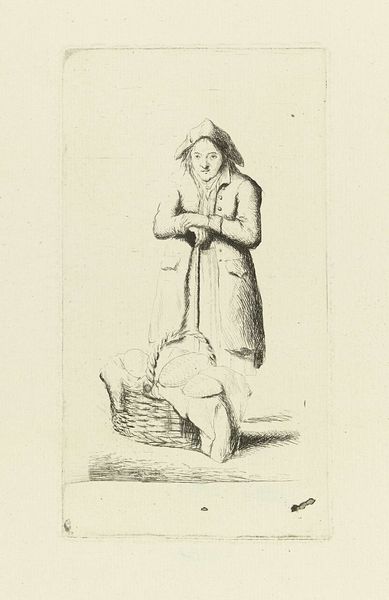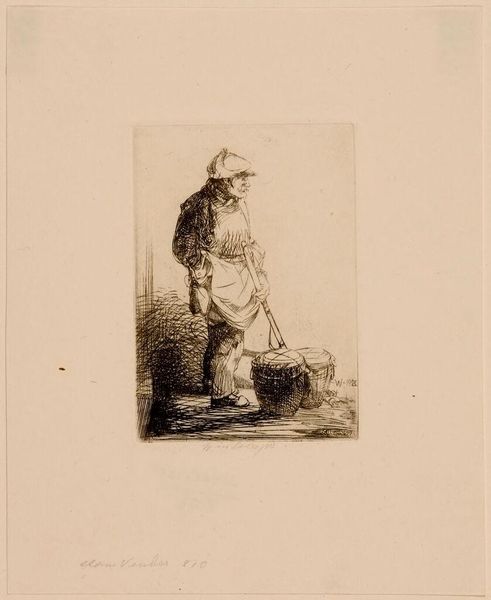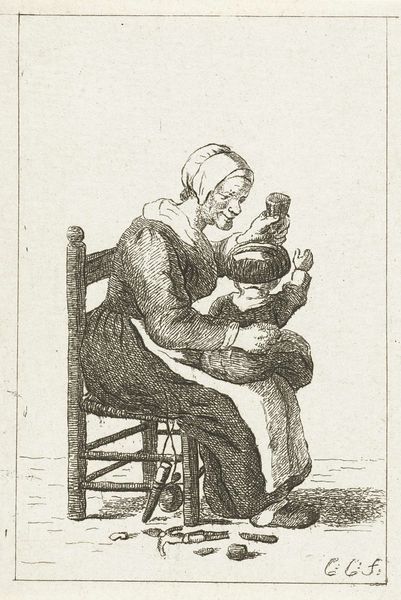
drawing, pencil
#
portrait
#
drawing
#
pencil sketch
#
romanticism
#
pencil
#
pencil work
#
realism
Dimensions: height 234 mm, width 152 mm
Copyright: Rijks Museum: Open Domain
Curator: Before us, we have Dirk Jurriaan Sluyter’s 1835 portrait of Jan van Walré, rendered meticulously in pencil. Editor: The initial impression is of a theatrical melancholia. The subject’s expression is a mixture of forced joviality and profound sadness, amplified by that strange figure lurking behind him. It feels psychologically charged. Curator: The use of pencil lends itself to this, doesn’t it? We see such fine hatching to model the form and the textures seem palpable. The paper itself provides the ground, the very substance of the image, doesn't it? There’s an intimacy and directness to pencil that I think aligns perfectly with Romanticism, that interest in individual feeling. Editor: Absolutely. That second figure, clasping a jester's staff, peering out, introduces an ambiguity. Is it meant to symbolize a hidden facet of van Walré's character, or some societal role he's forced to play? Is the artist commenting on authenticity and the masks we wear? Curator: Given Sluyter's historical context, steeped in the burgeoning Industrial Revolution, it might even reflect the societal pressures placed upon individuals within rapidly changing economic systems. Consider the labor and resources involved even in a seemingly simple portrait such as this, not just the artist’s labor but the manufacturing of pencils, the sourcing of the paper... Editor: And the jester—a recurring motif through art history, often used to critique power structures while cloaking the critique in humor. The 'fool' can speak truth to power. This is echoed in the subject's contradictory expression. There's defiance in the jest. Curator: Fascinating to consider the subtle visual language employed by Sluyter, how those symbols would resonate with his audience, embedded in collective cultural memory and the specific historical circumstances that framed their lives and the very materials that were available. Editor: This has opened up for me the image's underlying dialogue about the burdens of performance, the tension between public persona and private sorrow—encoded through potent imagery. Curator: It has made me consider how the material conditions and historical currents shape individual expression and artistic output—and even seemingly quiet artworks hold vast reflections of culture.
Comments
No comments
Be the first to comment and join the conversation on the ultimate creative platform.
